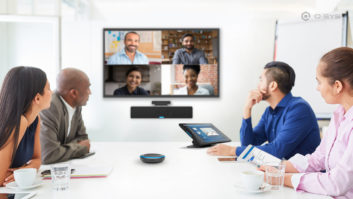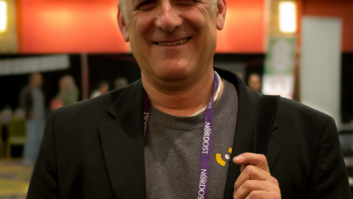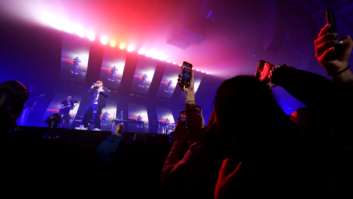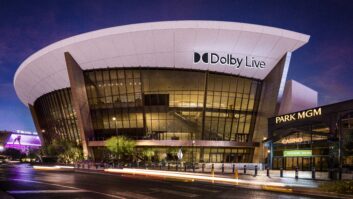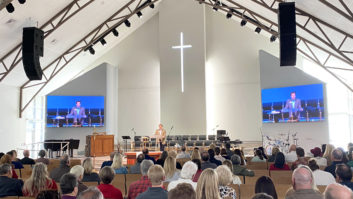If you are still uncertain about the scale of the challenge now facing the live music industry, then recent figures from PRS for Music will leave you in no doubt. The UK-based organisation reports that concert revenues in 2021 were a mere £8m – down from £11.3m in 2020 and £54m in the halcyon pre-Covid days of 2019.
Although overall music industry revenues have increased, the outlook for live music – for years the primary mechanism by which many artists earn the bulk of their living – remains ambivalent at best. Smaller venues – the grassroots locations where so many artists learn their craft – are particularly threatened, with the Music Venue Trust among the organisations to have called for more financial assistance. More generally, it seems there is still a long way to go before many live music fans feel comfortable with returning to, in particular, indoor spaces. As a result, it’s hard not to feel that one more Covid variant or surge could push some venues over the edge – never to return.
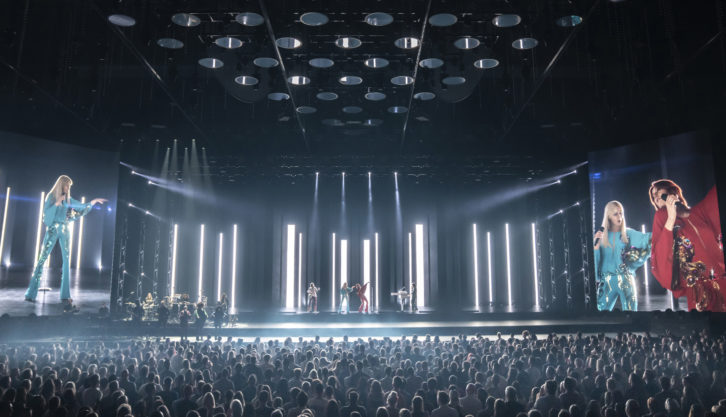
In this context, it’s inevitable that there has been a lot of discussion in the music industry about what might be done to lure audiences back. Many of the suggestions are understandably oriented towards logistics, crowd management, and making audiences feel safer and more comfortable – improving air quality and circulation being an obvious example. But there is also a focus on new technologies and how they might transform the gig-going experience – from immersive audio to augmented reality.
In this article we will look at a recent project that may ‘show the way’ for future immersive installations, as well as put the question of whether immersive audio as a whole has reached maturity to some of the sector’s leading innovators.
AUDIO DIMENSION
The example provided by EartH – a relatively new addition to the live music scene in East London – is especially encouraging. In what was reported to be Europe’s first installed L-Acoustics L-ISA Immersive Hyperreal Sound System installation, audio installer Adlib worked with venue owner Auro Foxcroft and L-Acoustics to specify and implement a 360-degree L-ISA system – the aim being to deliver an “all-round incredible audio experience” for audiences and artists alike.
L-Acoustics describes L-ISA (currently being used to add audio magic to Abba’s Voyage avatar gigs) as the “perfect match to raise the experiential value” at EartH. Certainly, the installed system has been devised to cope with a range of demands, comprising a front system of five hangs of seven Kara speakers – flown equidistantly across the front of the stage – whilst a central subsystem of four KS28s is flown in front and above the central Kara hang. A total of 18 X8s provide overheads and front-fills, while the core of the surround system is 12 Syva speakers – four per side, evenly spaced and mounted along the left, right and rear walls of the theatre.
With its impressively diverse roster of events, and an emphasis on creating distinctive experiences, EartH is proving an important testing ground for immersive audio over the long-term. Foxcroft noted: “The philosophy behind EartH has a focus on presenting some of the best artistic talent and experiences that can make us think twice and leave us inspired. L-ISA brings an incredible audio dimension to support these performances with its signature Hyperreal Sound.”
Meanwhile, Adlib project manager Rob Crossland has alluded to a transferrable quality to the installation that will become even more valuable as immersive systems become more ubiquitous. Reflecting on the EartH project, he remarked: “This is a very straightforward and immersive L-ISA system with side, rear and overhead extensions. As more venues move to L-ISA, this approach will allow touring productions to move between similar systems without re-working their entire show every night.”
MANAGED OVERHEADS
Crossland’s comment here emphasises a point that is likely to be fundamental to live music as a whole in the coming years. Even before the pandemic, there was an emphasis on touring ‘leaner’ with less equipment, meaning that productions were making greater use of permanently installed systems. This trend was more apparent in audio than visual systems, where technical riders – especially for larger arena productions – can be more diverse. But where tours were able to utilise more venue-based equipment, the benefits were not hard to discern – reduced expenses related to transportation and crew, as well as a lower carbon footprint.
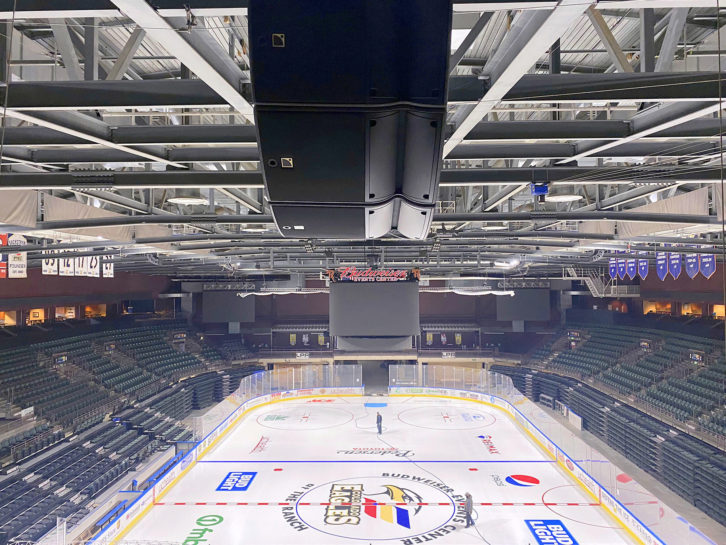 Emerging out of the pandemic, this impetus will be even stronger as firms look to make up for two years in which live performances were very limited in number. Add in rising fuel and energy prices, and the need to take a somewhat ‘bare bones’ approach to touring becomes even more apparent – especially for artists in the earlier phases of their career. The potential complexity of immersive audio – and the staffing implications of taking them on the road – makes the lure of using permanently installed systems even stronger. Hence it is likely that, to ensure their appeal to promoters and artists, there will increasingly be standardisation around a couple of leading immersive audio systems.
Emerging out of the pandemic, this impetus will be even stronger as firms look to make up for two years in which live performances were very limited in number. Add in rising fuel and energy prices, and the need to take a somewhat ‘bare bones’ approach to touring becomes even more apparent – especially for artists in the earlier phases of their career. The potential complexity of immersive audio – and the staffing implications of taking them on the road – makes the lure of using permanently installed systems even stronger. Hence it is likely that, to ensure their appeal to promoters and artists, there will increasingly be standardisation around a couple of leading immersive audio systems.
But if the overall ‘direction of travel’ is clear, what of the underlying technologies? Would it be fair to say that immersive audio per se is now reaching maturity and is ready for mass adoption? Speaking to a few of the leading technology providers suggests that the answer is now a resounding ‘yes’.
BROAD CONTINUUM
Aki Mäkivirta is R&D director at Finland-based loudspeaker manufacturer Genelec. He places developments in a broader continuum that includes broadcast audio, music recording and other applications. “Some of the changes we see are gradual ones in terms of the style of production and the people who are doing the work – including the type of systems they have access to – and [in general] it is clear that there is a big move towards immersive audio,” he confirms.
But as critical as audio professionals having access to immersive audio technologies might be, it’s also important to remember the consumer. It is to be expected than an audience which is primed to experience immersive audio in the home will, in some respects, be more ready to enjoy it elsewhere – including in the concert hall.
“You do need to consider things from the consumer and the end-user side, so it [is logical] that there have been a lot of trials from that perspective,” says Mäkivirta.
Meanwhile, from the operator perspective, there is an impetus to minimise the requirements associated with implementation regarding both practical and financial aspects. Fraunhofer IIS is one of the world’s leading pioneers of immersive audio technologies, with specific developments including the MPEG-H audio coding standard. As in other areas of production and content creation, there is a requirement for “technologies and tools that help them meet their audience’s needs, to be sure, but they also want future-proof solutions that they can integrate into the current workflows and that do not require a completely new skillset. Of course, there are also resource concerns: businesses need realistic budgets for technologies and staff,” said head of media systems and applications Harald Fuchs.
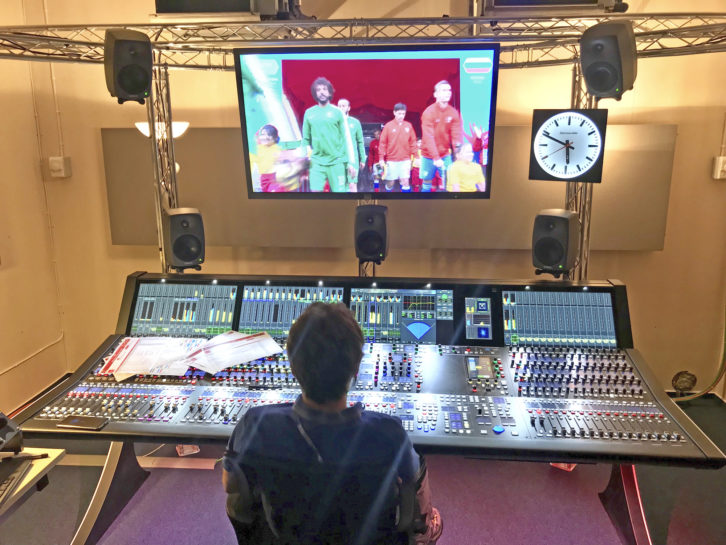 Nonetheless, after two years in which projects were on often pause due to obvious factors, it appears that interest in immersive audio for live performance is steadily increasing again. Christian Struck is senior product manager audio production at Lawo, whose mixing consoles and other professional audio products are used for live performance, theatre and broadcast applications.
Nonetheless, after two years in which projects were on often pause due to obvious factors, it appears that interest in immersive audio for live performance is steadily increasing again. Christian Struck is senior product manager audio production at Lawo, whose mixing consoles and other professional audio products are used for live performance, theatre and broadcast applications.
“The number of venues venturing into immersive audio is rising exponentially,” says Struck. “Some adopt spatial systems, others favour a wavefield approach, and still others want to immerse their audiences in an object-based 3D sound experience. Judging by the requests Lawo receives from its customer base, immersive audio is in the process of becoming a staple in the performing arts.”
BEAUTIFULLY KRAFTED
Any lingering doubts about the possibilities of immersive audio were comprehensively dismissed in 2013 when we were given the opportunity to see a couple of shows during Kraftwerk’s historic immersive concert series at London’s Tate Modern. Beautifully delivered via an all-enveloping d&b audiotechnik surround PA, and combined with stunning projection and visuals throughout, the music of the hugely influential German electronic group acquired a remarkable new level of detail and impact.
Needless to say, the whole Tate run was the result of meticulous planning and very careful thought about the kind of experience that the band wanted to achieve with an immersive production. This approach – whereby the creative and technological elements blend together seamlessly – will continue to be vital if immersive audio is to become a mainstay of concert halls. Equally, it is likely that it will suit some types of music and performance more than others – and there may well be some artists who don’t really wish to engage with surround.
Nonetheless, for venues looking to differentiate what they do and retain a foothold in an uncertain market, investing in immersive audio now could prove to be a very enlightened move.
